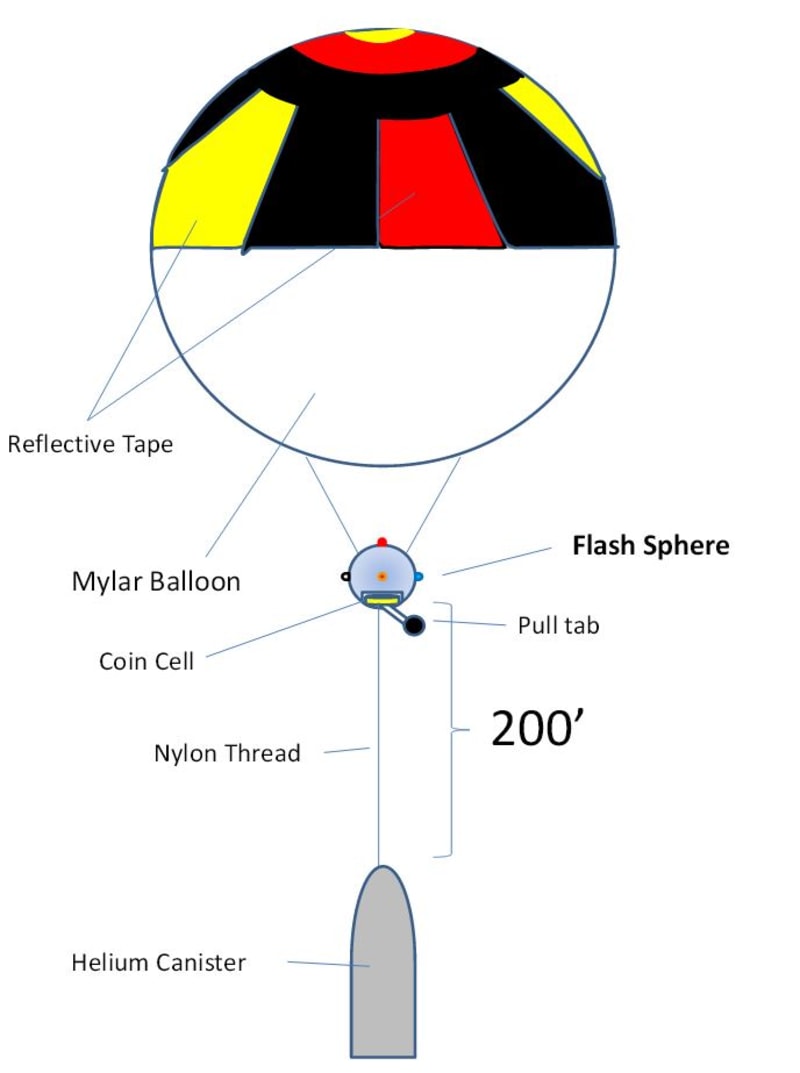

This invention consists of 5 high-intensity red, white, and blue LEDs mounted in a 1 inch diameter light-weight sphere powered by a single lithium coin cell with a pull-tab to activate a COB producing "energy-conserving" pulse width modulated )PWM) flashing sequences that last for 7-14 days (verified through testing) weighing less than .4 ounces including balloon, reflective surface tape, battery and sphere. The Sphere is hung from the bottom of a Mylar inflatable balloon with white surface on the bottom hemisphere to reflect projected light upward from one of the LEDs, along with red, and yellow reflective 2" spaced striping on the top hemisphere to catch sunlight producing intensified flashing as the balloon moves in the wind outward from sunlight. A 200 foot long nylon thread is permanently attached on one end to a small cylinder of compressed helium (similar to the type used to whip cream) while the opposite end is attached to the sphere at the base of the balloon. The Flash Sphere is activated by pulling an insulated tab from between the Li-Ion coin cell contact and the holder contact to light 5 LEDs, four LEDs spaced at 90 degrees to each other point outward from the horizontal equatorial plane of the sphere while the 5th points upward towards the white under-surface of the inflated balloon. The balloon is inflated via the compressed cylinder, sealed with a rubber plug and released to the sky where it will remain up to 200 feet in altitude 24/7 flashing for a week or more.
The Flash Sphere emergency flare solves many problems inherent in flares that lie on the ground. First it gives off no heat to ignite combustible materials, it can be seen over hills, around curves, above trees, from great distances to warn of upcoming traffic hazards as well as serve as a beacon for search and rescue teams for missing skiers, hikers, boaters, and campers in need of medical assistance for several days continuously. With a 10+ year shelf-life and tiny package that fits in a small pocket, it could become a major key to saving lives on land and seas.
The market potential is enormous. Because of its low cost (About a dollar to manufacture), it could be given away with every new car, boat, tent, backpacks, life preservers, and other items connected to camping, hiking, traveling, Boy Scouts, and even in the military (Replacing visible LEDs with IR LEDs for FLIR equipment used to see IR frequencies).
-
Awards
-
 2013 Safety & Security Honorable Mention
2013 Safety & Security Honorable Mention -
 2013 Top 100 Entries
2013 Top 100 Entries
Like this entry?
-
About the Entrant
- Name:Harry Wainwright
- Type of entry:individual
- Patent status:pending

